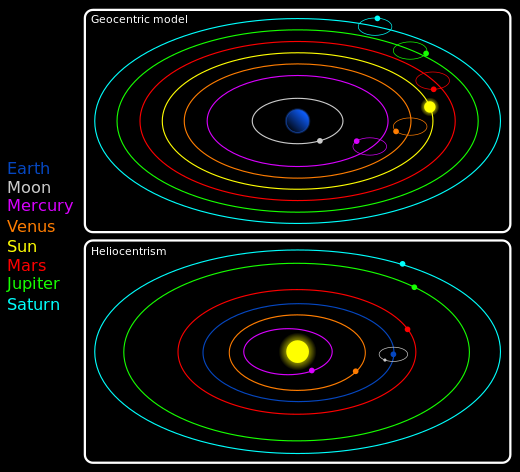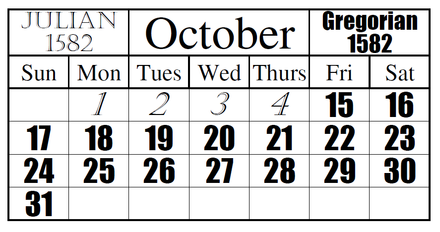Today is February 29 and not only does it give me a one-day reprieve to get my semi-monthly blog out on time (though not as much bonus time as those months that have 31 days), it also gives me opportunity to reflect on the progression of humankind to understand his place in the universe – obscure. So, this blog may also be rather eccentric and obscure but it provides opportunity, perhaps, to educate, as well as entertain.
Everybody knows that every four years by convention, (supported by ‘science’, not just belief) that we add an extra day in February to compensate for the fact that there are not exactly 365 days in the year but 365.25 (or even more fractions if you want to get really mathematical about it). Well, everybody knows that now but it wasn’t always thus.
The ancients didn’t pay much attention to time. They noticed (obviously) there was day and night (though they weren’t entirely sure where the sun went at night), and that after each night there was another day. But then, the smart ones at least, noticed that each day the shadows on the ground were at slightly different angles and the length of daylight seemed longer (or shorter) as the days went by. The ancients didn’t know why this was, of course – that the earth rotated on its axis (and more so, the damn thing was tilted at an angle relative to the sun). (At the time they also didn’t have an idea of hours and they hadn’t yet realized there should be twenty-four of them in every ‘day’ (which included the night, and they had no notion of minutes (sixty of them in an hour) or seconds, (good gracious another sixty of them in every minute – but that’s a story for a future blog).
As primitive man became more and more agrarian, they noticed there were variations in weather over a certain period as well, and that these seasons regularly returned. They called this periodicity a ‘year’. But the ancients long ago also recognized that twice a year (in the northern and southern hemispheres at least) the amount of the daylight was exactly equal to the amount of nighttime (called equinox) and once a year there was the shortest day and half a year later the longest day (these are called the solstices). And then the ancients determined that, at least on the Eurocentric northern hemisphere, the Equinox that followed the shortest day came about one quarter of the way through the year, and that the weather was getting warmer, and they called this season ‘spring’ and this was a good time to sow. (They also realized that equinox that followed longest day of the year was a good time to reap.) (For more on this consult Ecclesiastes Chapter 3, 1-9, or The Birds, Turn, Turn, Turn.)
Everything was fine, except, some very clever priests began observing the heavens very closely and realized the sun shone on a very specific place and at a very particular angle once per year and they built monuments to revere this phenomenon, and called the monuments henges (at least in Britain and Brittany), pyramids in ancient Egypt.
Well those calculating priests, full of themselves by then, started keeping ever sharper and meticulous records, tracking and labeling the days and the years, and they called this a calendar. Useful of course for planning.
It took a long time (understandably – perceptual difficulties in early human comprehension, not to mention bias) before humans understood and accepted that the Earth is not the center of the universe (some Torontonians still have this cultural bias), but gradually it became apparent that something was wrong with their calendars; calendar holidays designated for celebrating spring had a drifted away from the actual Spring Equinox. There seemed to be some wobble in the universe.

This raised a new problem, the days and the seasons and the years didn’t match. If god created the heavens and the earth and the period for the sun to pass over the earth was one day, then surely ‘he’ could have created a year as a simple multiple of a day. I suppose the perfect number might have been 360 days (nicely divisible by 12, and 4). How could god in his heavens mess things up like that?
But that’s where the problems really started. The spring equinox occurred at the same time every year, but the number of days between one spring equinox to the next was not a perfect number. Instead it was 365 and ¼! How to reconcile those calendar ‘days’ with the solar events in the ‘years’? Why would he make it so difficult for mere mortals to keep track of all this? God works in mysterious ways to challenge mere mortals, and the priests were up to the task. They devised fixes or ‘patches’ to their schemas.
Blame it on the Romans. Or the Greeks, or the Egyptians, or in the dozens of other ancient and oriental societies trying to make sense of the universe. But we’ll stick with the Romans because they were the dominant culture 2000 years ago and, together with the Roman Catholic Church their schemas came to dominate the rest of the world since, flawed though they may be.
Originally the early Roman calendar had only ten months with two more months of adjustments. Later it had 12 months but totaled only 355 days with ten days for adjustments. (And all this before the invention of double entry accounting!) When Julius Caesar returned from his conquest of Egypt (and Cleopatra) in BC 47 he commissioned a revision of the Roman calendar – hence the Julian calendar – implemented in 45 BC (but of course they didn’t know that at the time!). The Greeks (and the Egyptians) were aware of the length of the year being 365¼ days. Julius Caesar distributed 30 or 31 days to eleven of the months (and renaming the fifth and sixth months Julius (after himself) and Augustus (after his stepson Tiberius Augustus)) and assigned a leap day to February every four years. Hence three years had 365 days and the fourth had 366 days to align the calendar with the seasonal solstices and equinoxes.
But this still didn’t reconcile all the quirks in the celestial year. And that’s because the extra ‘day’ added to the calendar every fourth year is slightly more than the earth’s actual trip around the sun every four years; the Julian calendar assumed, incorrectly, that the average solar year is exactly 365.25 days long, an overestimate of a little under one day per century, whereas the actual trip around the sun is 365.2425 days. And so by adding an extra day every four years to the calendar (in February), the Romans were overshooting and over time the Spring equinox drifted further and further back from the intended calendar day of March 21 in the original Julian Calendar. By the 1500s the calendar was ahead by 10 days. The old Julian calendar was causing a lot of confusion (principally because the calculation of the date for Easter depended on the vernal equinox falling on March 21 and not ten days earlier).
The recognition that the calendar needed reform because of this calendar creep was centuries in the making including Dante in 1300. The Council of Trent in 1545 authorized Pope Paul III to revise the calendar but he died before it could be resolved. Along came Pope Gregory XIII who decreed that the calendar would be adjusted by 10 days: so in 1582, Thursday March 4 was followed by Friday March 15 (ha, thus preserving the Ides of March!) so that the solar Equinox would actually occur on the traditional March 21 date.

Talk about a Leap Year
In addition, to avoid this gradual drift in future, the computation of the fourth year leap year adjustment was also revised by introducing the concept of a leap century: every centennial divisible by 100 will not be a leap year but every centennial year divisible by 400 will be a leap year and add a day February 29: so, 1700, 1800 and 1900 were not leap years (no February 29 was added), but 2000 was a leap year. (I remember thinking in 2000 that this was a unique experience not to be had again for another 400 years; and already, that was 24 years ago!)
And who was the genius who figured this out and lobbied for the change? It wasn’t Pope Gregory, nor Phillip II of Spain – they just brought the political clout. The calculation of the actual number of Earth days to circumnavigate the sun was the heliocentric Copernicus among others; the determination that the Julian calendar should be adjusted by 10 days and that leap centuries be introduced with the rule of 400, was proposed in 1575 by the Calabrian doctor Aloysius Lilius. Who knew?
Astoundingly, despite these elaborate calculations and adopting of the Gregorian Calendar, the Roman Catholic Church still did not accept heliocentrism (Earth rotating daily and revolving around the Sun). Galileo’s championing of Copernican heliocentrism was investigated by the Roman Inquisition in 1615, which concluded that heliocentrism was foolish, absurd, and heretical since it contradicted biblical creationism; Galileo was convicted of heresy in 1633, forced to recant and was confined to house arrest until his death in 1642. It wasn’t until 1992 under Pope John Paul II that the Catholic Church had turned toward vindicating Galileo and accepted heliocentric theory rather than geocentric belief.
(But that doesn’t mean that Toronto is not the Centre of the Universe.)
Doug Jordan, reporting to you from Kanata, Canada
© Douglas Jordan & AFS Publishing
All rights reserved. No part of these blogs and newsletters may be reproduced without the express permission of the author and/or the publisher, except upon payment of a small royalty, 5¢.
